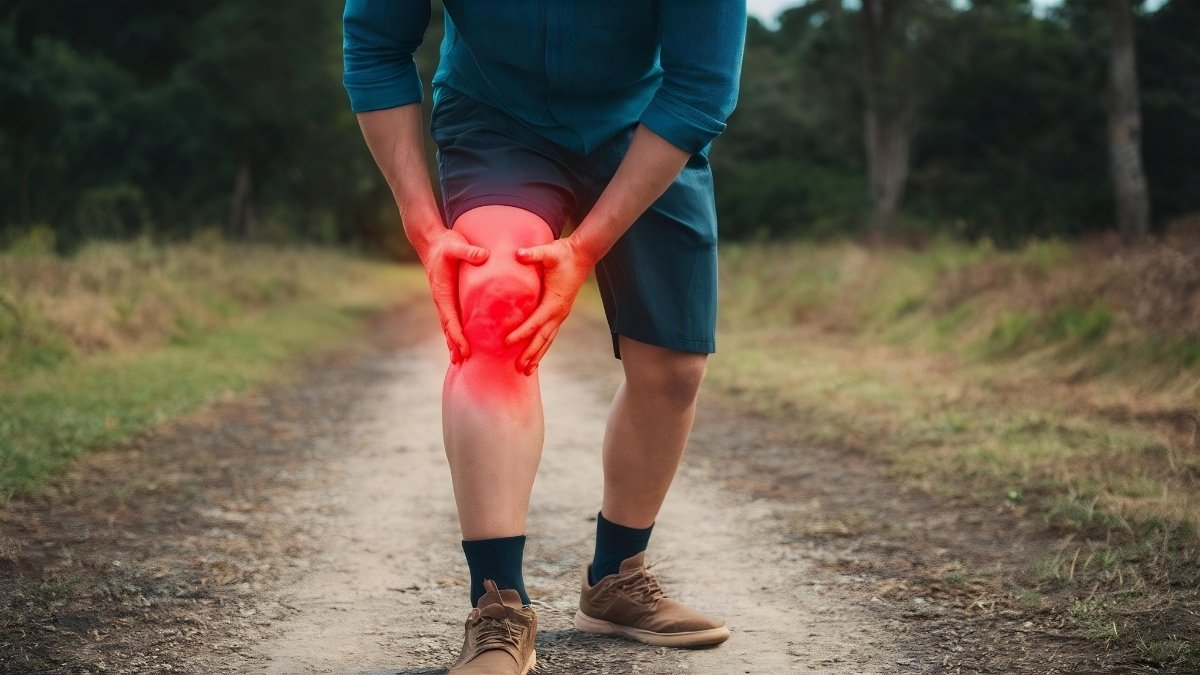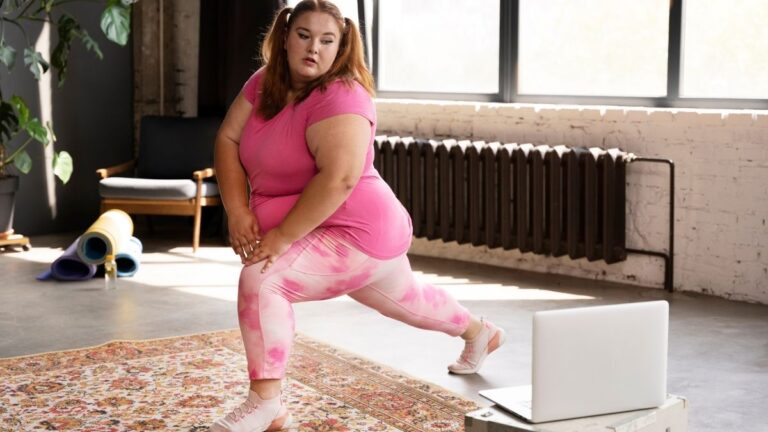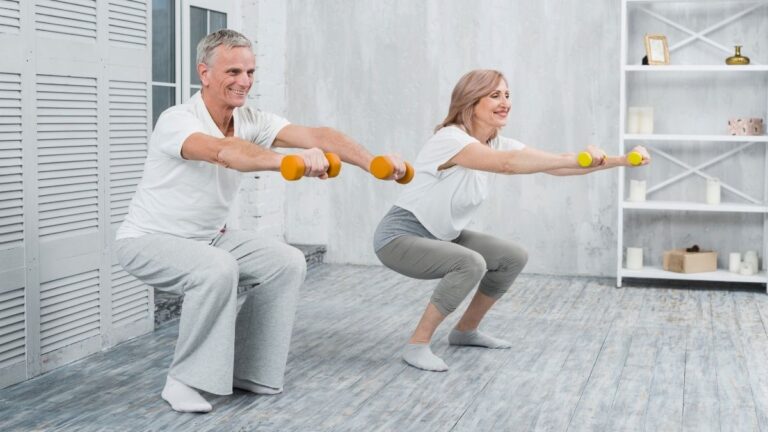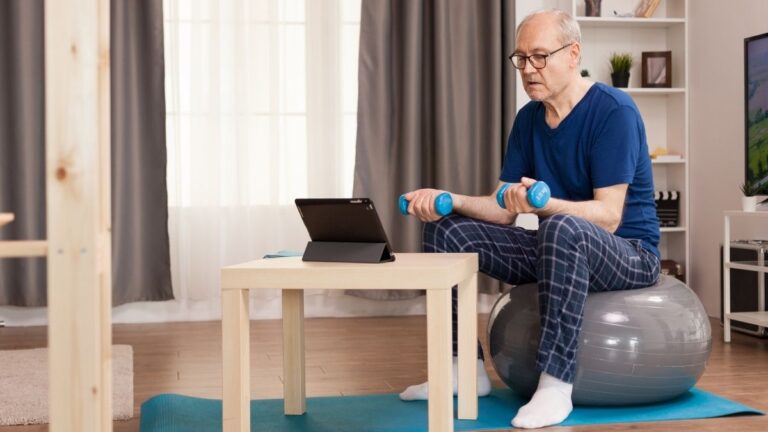Do your knees cave in when you squat? The Hidden Reason Your Knees Cave In (And 3 Secret Fixes Pros Swear By!)
That inward collapse of your knees during squats isn’t just poor form—it’s a red flag that could lead to serious injury.
You’ve probably noticed it happening. Your knees cave in when squatting, especially when the weight gets heavy or you’re tired. Maybe you’ve tried to focus on “knees out” but they still buckle inward. You’re not alone—and you’re not weak.
This knee cave (called knee valgus in exercise science) puts dangerous stress on your ACL and knee joint. It also means you’re missing out on the full strength benefits of squatting. Your glutes aren’t firing properly, your form breaks down, and you probably feel unstable at the bottom of each rep.
Here’s the good news: knee valgus is fixable with the right approach.
The problem isn’t willpower or focus—it’s specific muscle weaknesses that force your body to cheat. When certain muscles are weak or inactive, your knees have nowhere else to go but inward.
Why Do Your Knees Cave In During Squats?

Your knees buckle inward for five main reasons. And yes, it’s fixable.
Weak hip muscles are the biggest culprit. Your gluteus medius sits on the side of your hip. It keeps your knee tracking straight. When it’s weak, your knee has nowhere to go but in. Studies show 70% of recreational athletes have some knee cave when they squat. That’s not normal—it’s common.
Your ankles might be too tight. Poor ankle mobility forces your body to cheat. If your ankle can’t bend enough, your knee moves inward to help you get down. It’s like trying to squat in ski boots.
Your core isn’t doing its job. A weak core creates a wobbly foundation. Your body tries to find stability anywhere it can. Often, that means your knees collapse inward to help balance you out.
Sitting all day makes it worse. Your hip flexors get tight. Your glutes get weak. Your body forgets how to move properly. Dr. Gray Cook’s Functional Movement Screen research shows this pattern in 60% of office workers who exercise.
Your brain picks the easy path. Movement is learned. If you’ve been letting your knees cave for months, your nervous system thinks that’s correct. The good news? You can retrain it.
Here’s what matters most: knee valgus (the fancy term for knee cave) increases ACL injury risk by 8 times. That’s why squat form correction isn’t just about looking good—it’s about staying healthy.
The fix starts with knee valgus exercises that strengthen glutes and retrain movement patterns. Let’s get to work.
The 3 Exercise Physiologist-Approved Moves to Fix Knee Cave
These three moves target exactly what’s broken. Do them right, and your knees will track like they should.
Exercise 1: Clamshells with Resistance Band
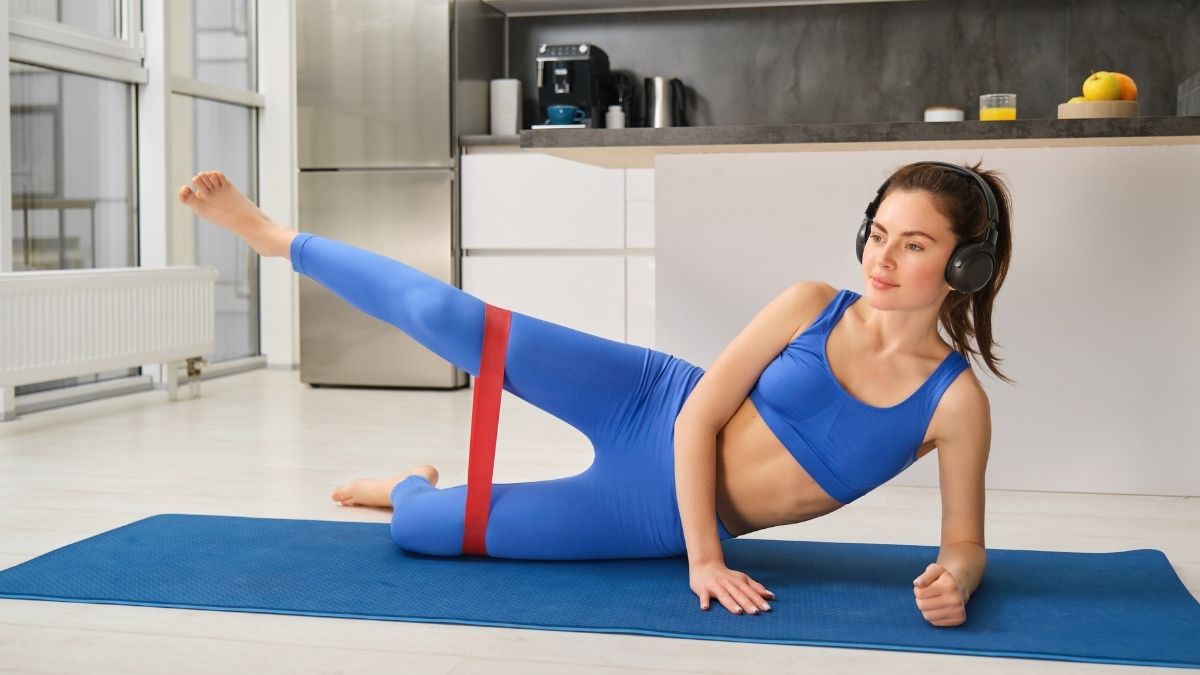
Why this works: Clamshells hit your gluteus medius directly. This muscle is usually the weakest link in knee cave problems.
How to do it: Lie on your side with knees bent 90 degrees. Put a resistance band around your knees. Keep your feet together and lift your top knee up. Hold for 2 seconds, then lower slowly.
The details that matter:
- Keep your core tight the whole time
- Don’t let your hips roll backward
- Your feet should stay glued together
- Move slow and controlled—no bouncing
Common mistakes: Most people go too fast or use their back muscles instead of their glutes. You should feel this in the side of your hip, not your lower back.
Your plan: Start with 2 sets of 15 per side, 3 times per week. Use a light band first. When you can do 20 reps easily, switch to a stronger band.
Exercise 2: Single-Leg Glute Bridges
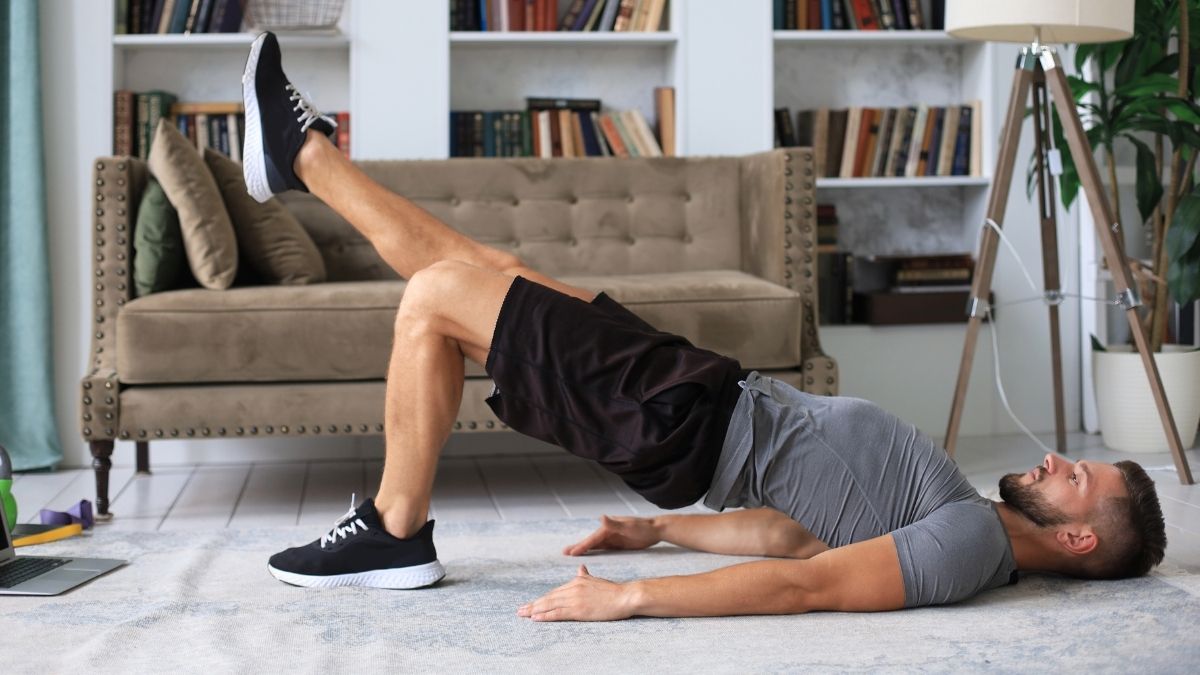
Why this works: This exercise fires up your entire posterior chain—glutes, hamstrings, and core. Plus, doing one leg at a time fixes imbalances between sides.
How to do it: Lie on your back with knees bent. Lift one foot off the ground. Push through your heel and lift your hips up. Squeeze your glutes at the top for 2 seconds.
Progress step by step: Week 1-2: Double-leg bridges, 15 reps Week 3-4: Single-leg bridges, 8-10 reps per side
Week 5+: Single-leg bridges with 30-second holds
The setup secrets:
- Start with your feet hip-width apart
- Keep your lifted knee at 90 degrees
- Push through your heel, not your toes
- Your hips should stay level—no tilting
What you’ll feel: A burn in your glutes and the back of your working leg. If you feel it in your lower back, reset your position.
Your plan: Start with bodyweight bridges. Do 2-3 sets of 8-10 reps per side. Progress to 30-second holds when you can do 15 reps easily.
Exercise 3: Monster Walks
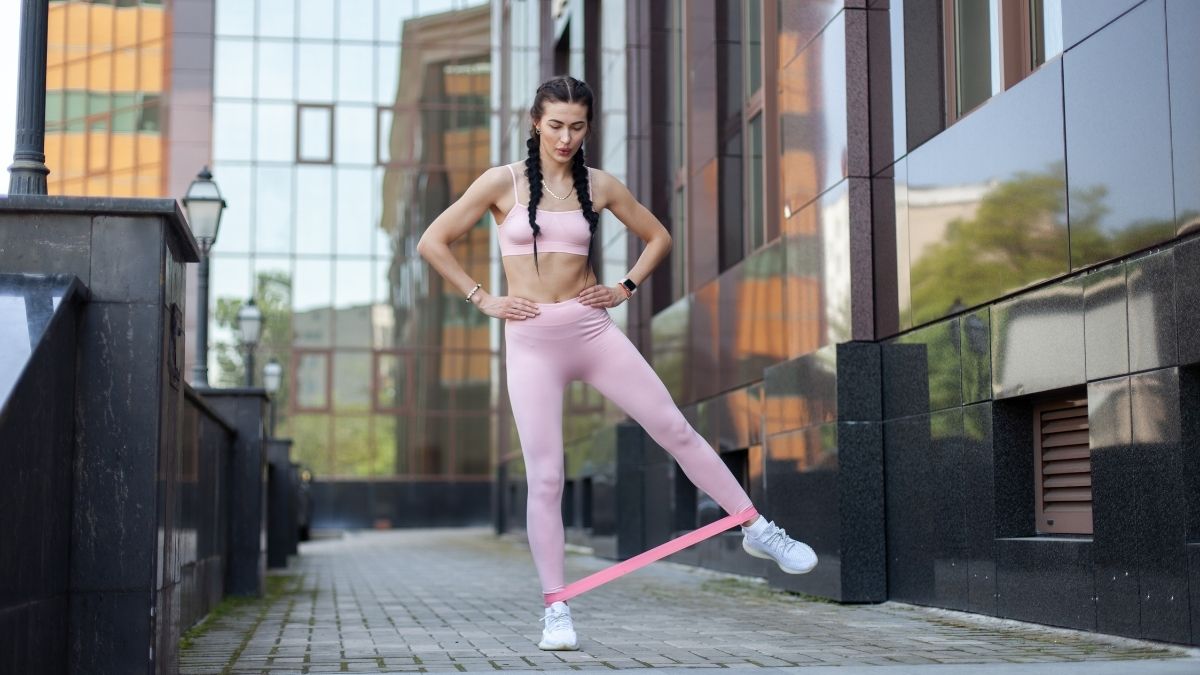
Why this works: Monster walks strengthen glutes while you move. This builds the exact strength pattern you need for squats.
How to do it: Put a resistance band around your ankles. Take wide steps to the side, keeping tension in the band. Stay low like you’re sitting in a chair.
The technique that works:
- Keep your feet parallel—no duck walking
- Take 12-inch steps to the side
- Stay in a quarter-squat position
- Don’t let the band snap your feet together
Band placement matters:
- Around ankles = hardest
- Around knees = medium
- Above knees = easiest
Common mistakes: Standing up too tall, taking tiny steps, or letting your knees cave (yes, the thing we’re trying to fix).
Your plan: Use medium resistance band for 10 steps in each direction. Do 2 sets as part of your squat warm-up. This works best right before you squat.
Why exercise physiologists love these moves: They target the exact muscles that fail during knee cave. They’re also safe—you can’t really hurt yourself doing them wrong.
Here’s the key: these knee valgus exercises work because they strengthen glutes for squats in the exact positions where you’re weak. Do them consistently, and you’ll see changes in 2-3 weeks.
How to Add These Exercises to Your Training
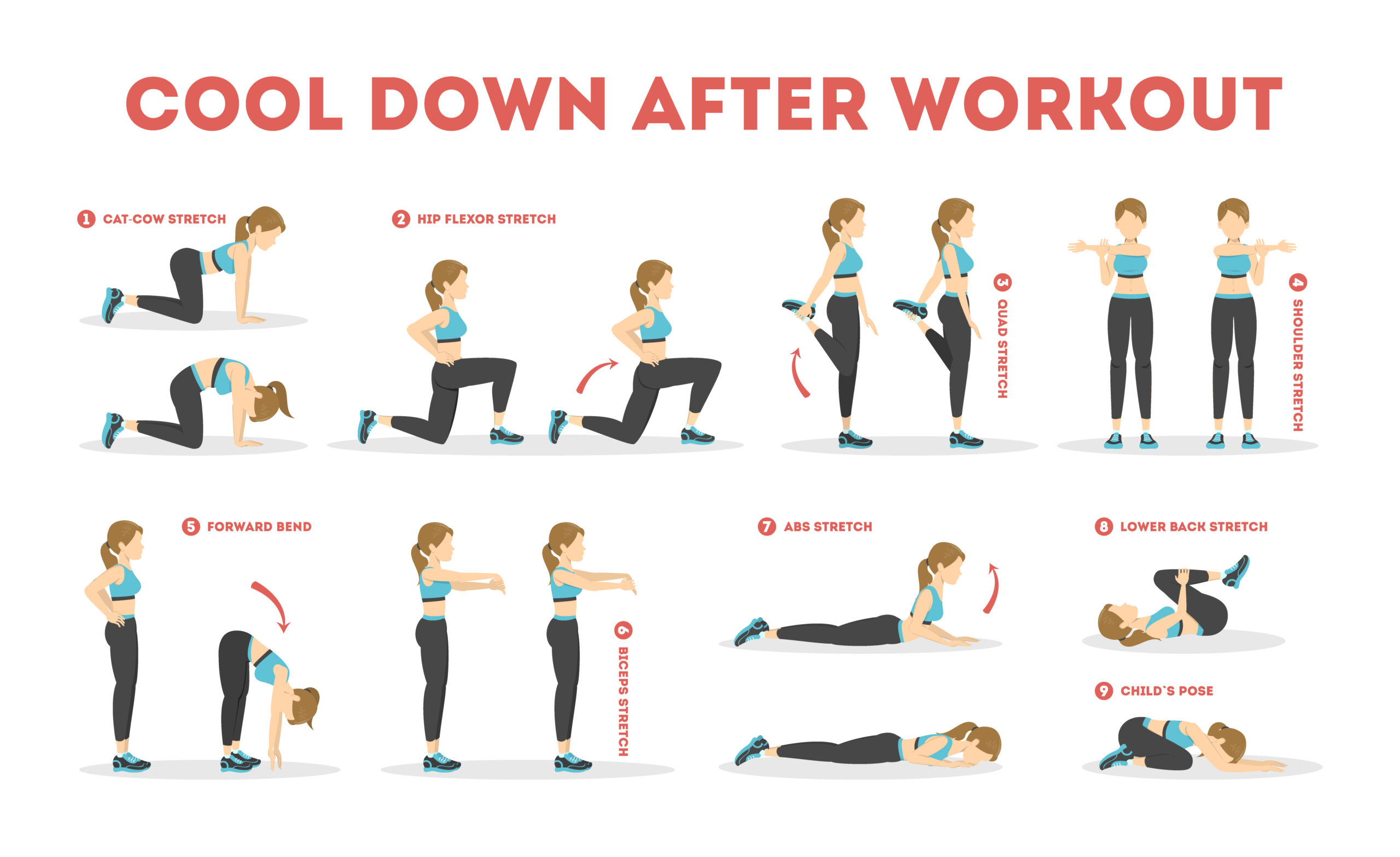
Timing is everything. Do these moves 5-10 minutes before you squat. Your glutes need to “wake up” before they can protect your knees.
Your weekly plan:
- Monday: All 3 exercises before leg day
- Wednesday: Clamshells and bridges (recovery day)
- Friday: All 3 exercises before squatting again
- Sunday: Monster walks only (light activation)
Progressive overload made simple: Week 1-2: Learn the movements, focus on form Week 3-4: Add resistance or reps Week 5-6: Increase hold times or band tension Week 7+: Maintain and refine
How to fit this into your current routine: Already warming up for 10 minutes? Replace 5 minutes of cardio with these moves. Don’t add time—replace less useful activities.
Timeline for results: Most clients see squat form correction improvements in 4-6 weeks of consistent practice. Your knees will feel more stable in 2-3 weeks. Full strength changes take 8-12 weeks.
The mistake everyone makes: Doing these exercises after squatting. That’s like putting on a seatbelt after the crash. Do them before, when they can actually help.
Track your progress: Film yourself squatting from the front every 2 weeks. You’ll see the difference before you feel it.
Remember: consistency beats perfection. Do these strengthen glutes exercises 3 times per week, and your knees will learn to track properly.
Red Flags: When to Get Professional Help
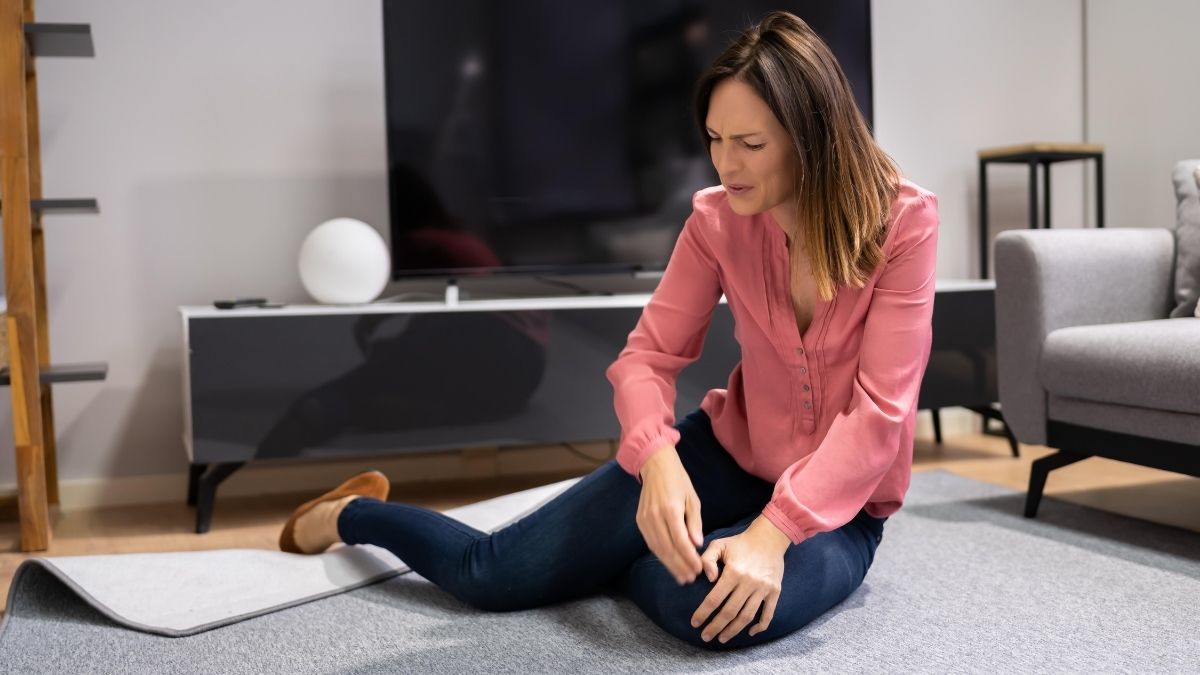
These exercises fix most knee cave problems. But sometimes you need expert help.
See a physical therapist if:
- Your knees still cave after 8 weeks of consistent training
- You have pain during or after these exercises
- One knee caves much more than the other
- You’ve had previous knee or hip injuries
Pain that’s not normal: Muscle fatigue is fine. Sharp, shooting, or persistent pain isn’t. Stop and get checked if exercises make things hurt worse.
When self-correction isn’t enough: Some people have structural issues or severe imbalances that need hands-on treatment. A movement screen can identify these problems early.
Your history matters: Previous ACL tears, hip injuries, or ankle sprains change how your body moves. These old injuries often need professional attention to fully heal movement patterns.
The bottom line: If knees cave in when squatting despite doing these exercises correctly for 2 months, something else is going on. Don’t push through—get help.
Most knee valgus problems respond well to targeted exercise. But knowing when you’re in over your head prevents bigger problems down the road.
Fix Your Knee Cave Starting Today
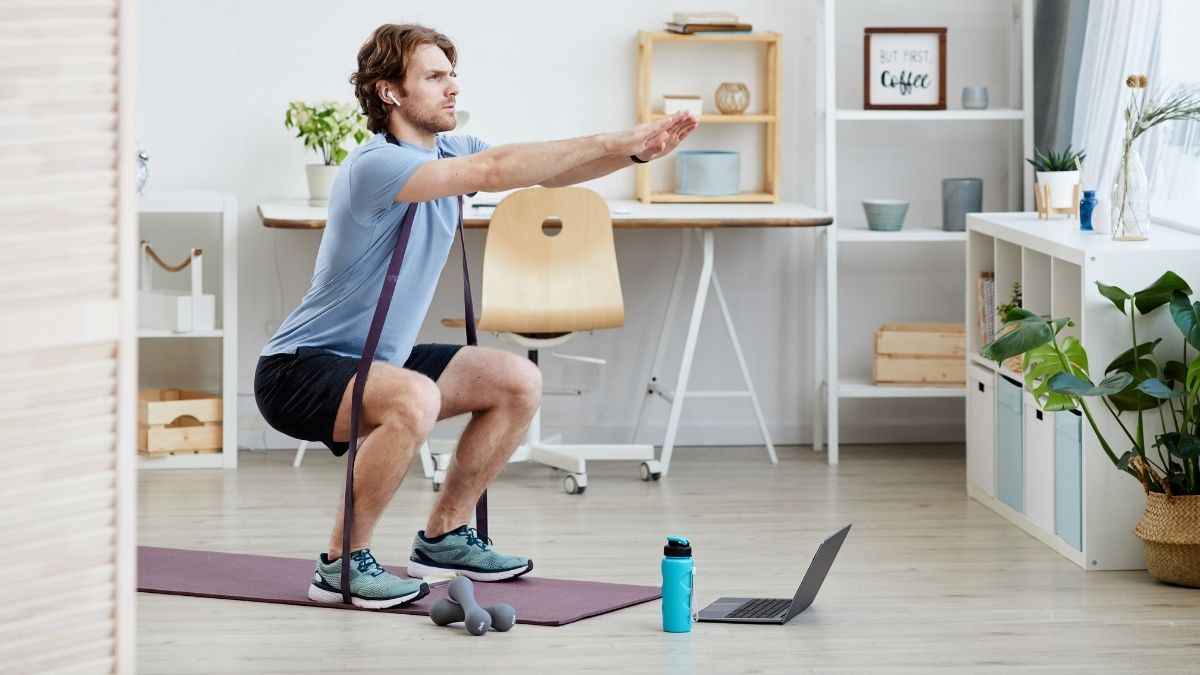
Your knees cave because specific muscles are weak and movement patterns are broken. The three exercises above target exactly what’s wrong: weak glutes, poor hip stability, and faulty movement patterns.
Start with clamshells. They’re the easiest and most effective for beginners. Do them tonight while watching TV.
Add the other exercises gradually. Master one before moving to the next. Quality beats quantity every time.
Be patient with the process. Movement patterns took months or years to develop. Fixing them takes weeks, not days. But the work is worth it—proper squat form correction prevents injuries and builds real strength.
Your knees will thank you. Less pain, better performance, and confidence in your squat. That’s what happens when knees cave in when squatting becomes knees tracking perfectly.
Start with just one exercise today—your knees will thank you tomorrow.


